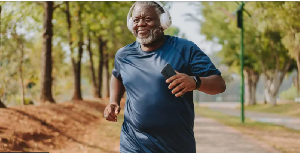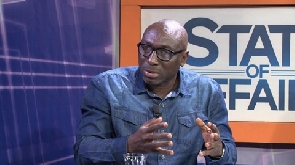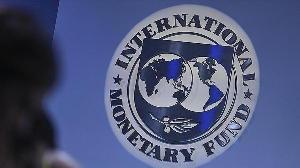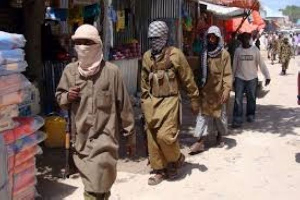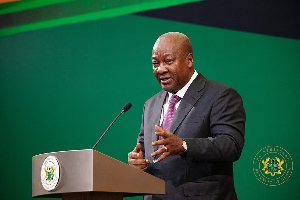Many pipo dey go to gym wit one goal for dia mind: to burn fat.
However, di body no dey immediately switch to fat-burning mode. Instead, e dey rely on a complex system of energy use, depending on di exercise intensity, duration, and fuel availability.
To understand how di body dey burn fat, you go first know how e dey use energy.
How di body dey use energy?
"Di body immediate energy reserve na glycogen, na form of carbohydrate, wey we dey stored for our muscles and liver, na so Paulo Correia, professor of physiology for Universidade Federal de São Paulo (Federal University of São Paulo), for Brazil explain am.
"E dey provide quick energy for activities wey require quick bursts of effort, like running 100 metres at full speed or lifting heavy weights," Prof Correia tells BBC.
Glycogen dey come from carbohydrates wey we dey eat—including healthy options like fruits, vegetables, and whole grains, as well as less healthy choices like sugary snacks, white bread, and sodas. While both types dey provide energy, unhealthy options tend to dey higher in calories and low in nutrients
Fat dey serve as energy reserve wen we consume more calories dan we dey burn. E dey provide more energy per molecule pass glycogen, but e take longer time for di body to break am down into usable energy.
Ed Merritt, professor of kinesiology at Southwestern University, Texas, use example of candle and a piece of wood to explain di process:
"One candle dey represent fat—e dey burn slowly and steadily—while wood dey burn hot and fast but e dey disappear sharp- sharp. Our body dey work di same way. If we need quick energy, like during intense exercise, we dey burn carbohydrates. But if energy demands dey lower, we dey rely more on fat."
Prof Merritt tell BBC say di concept relate to di"fat-burning zone," wia di body dey use fat as dia primary fuel during low-intensity and moderate-intensity level.
However, im points out say pesin fit reach dis zone even during sedentary activities like to sitdon for desk or watch TV—but dis no mean say weight loss dey happun.
"Relying solely on di fat-burning zone for weight loss dey misleading. Many tins dey to di story," im add.
Wetin be di best exercise?
One common misconception na say cardio na di only effective way to lose fat. While activities like running and cycling dey burn calories, strength training dey equally important.
Building muscle dey boost your resting metabolism becos muscle tissue requires more energy to maintain dat fat. E mean say you fit dey burn more calories even wen you no dey exercise.
Muscle mass dey play a key role for overall health, e dey help to prevent chronic conditions like diabetes, heart disease, and osteoporosis (weakened bones).
Intense exercise primarily dey burn glycogen, while fat go become di main energy source during moderate-intensity walk ova a prolonged period—wey dey long enough for glycogen to reduce but e go dey so intense wey go you lack di quick energy wey you need to sustain di movement.
Dis intensity range dey known as "Zone 2," e dey around 60-70% of your maximum heart rate. While e get benefits for cardiovascular health and increased fat oxidation, e no necessarily be di most effective for fat loss.
If you dey exercise, di key to fat loss na to burn calories—e too mata wia dem dey come from. Di body dey store fat wen calorie intake exceed expenditure. So, wen you burn more dan you dey consume, you go lose weight.
"At low intensity, you go burn more fat but fewer total calories. For high intensity, a smaller percentage of di calories dey come from fat, but you go burn more overall," na so Prof Merritt tok.
Even High-intensity interval training (HIIT), wey no primarily dey burn fat during exercise, fit aid fat loss ova time.
"Afta you stop to exercise, energy consumption go still kotinu—dis dey known as di'afta burn effect.' Di body go kotinu to use glycogen from di muscles and di liver until activity levels return to normal," Prof Correia tok.
Individual factors, like genetics, age, and fitness level, dey play a significant role on how efficiently a pesin dey burn fat.
Genetics fit make some pipo to naturally get a faster metabolism, e go allow dem to access fat stores more easily. As we age, metabolism dey slow, muscle mass dey decrease, and hormonal changes dey affect fat storage and usage.
To eat afta you exercise dey affect fat loss?
While exercise dey important for fat loss, how you refuel afta you workout fit also play a significant role.
"After exercise, your body dey work to replenish di fast-burning fuel (glucose) wey you use. If you no eat right away, your body fit break down stored fat to restore those levels," Prof Merritt explain.
However, if your goal na to maximise performance—whether lifting heavier, running faster, or improving endurance—eating right afta you workout dey crucial.
"E dey helps wit recovery, so you fit train hard again next time. Las-las, e depends on your goal. Weight loss and performance often conflict," im add.
To reduce carbohydrate intake fit promote fat burning and dey effective in some cases. However, wen combined wit regular exercise, E fit dey counterproductive.
A low carb fit lead to fatigue, muscle weakness, and even muscle loss, as di body fit begin break down muscle tissue for glucose wen fat alone no fit meet dia energy requirements.
E fit also weaken di immune system, as glycogen dey play a vital role for recovery and immune function.
How diet dey affect fat loss
To dey active dey make am harder to store fat, but exercise alone get limits as to how many calories you fit burn. Diet and overall energy balance dey play a crucial role.
"Fat only dey stored wen you no use your excess energy," Prof Correia tok.
To make you understand, one pound of fat dey roughly equivalent to 7,000 calories.
A 30 minute cycling session fit burn up to 300 calories, but you fit easily undo am easily by eating just one slice of pizza or one brownie.
"Exercise is important for overall health, but di calories you dey burn during exercise fit easily dey replaced by food," Prof Merritt concludes.
BBC Pidgin of Sunday, 30 March 2025
Source: BBC

